Unguja, Tanzania
Zanzibar is blessed with amazing scenery, filled with spice and warmth, and springs from often tragic history. It's also the birthplace of the incredibly talented lead singer of Queen, Freddie Mercury. Learning a bit more about the background of this tremendous singer, and possibly visiting locations of significance in his life, was on our list!
Zanzibar is made up of two large islands, Unguja and Pemba, though the former is what most people think of when they hear "Zanzibar." In 1964 Tanganyika and Zanzibar joined together to form what is today known as Tanzania (I have no idea how to pronounce Tanganyika, btw, so don't ask). Another part of the Zanzibar Archipelago, Mafia Island, is one of three islands known as Tanzania's Spice Islands, though it is further south and is not part of Zanzibar. I studiously avoided taking Dario to the southernmost island lest some latent Italian tendency toward crime emerge at an inopportune moment.
Approaching Unguja from the air.
Pemba has far less tourist infrastructure than Unguja, though it is well known amongst the diving community as having some of the most amazing reef diving in the world. It is also "…the last bastion of African witchcraft. In Remote People in 1931, Evelyn Waugh described Pemba as a centre for the black arts. '…witch doctors come to probe the deepest mysteries of voodoo'," as Divernet points out. I'm pretty sure they'd rather have your tourist bucks than your body parts, however, so it's pretty safe. Well, other than the spitting cobras and British humor.
They wouldn't tell us if the cobra bit was true or not. We were pretty sure the Jersey bit wasn't.
Pemba is gorgeous, more wild than its counterpart in some ways, and, according to locals, has a different geological background. We were told that Unguja was volcanic in origin (and therefore had better soil), while Pemba was based on an ancient coral reef. However, I suspected (and confirmed) this was a bit of a tale, most likely based on local rivalry and pride in the home turf.
But let's get back to Unguja… It is where Stone Town and most of the region's tourist activities are located. My favorite day in Zanzibar was going on a tour called "Safari Blue" and snorkeling around some of the smaller coral reef islands. Additionally, we ate fresh coconut, went dolphin watching from the dhow (boat), and swam in a mangrove lagoon.
The only bad moment was while snorkeling and suddenly realizing I was surrounded by jellyfish. Fortunately, they are an amazing non-stinging (well, at least they can't sting humans) variety, if you can believe it. When our snorkeling group's guide heard my panicked shrieks, he was quick to demonstrate how safe they were by picking one up and tossing it. Whew!
Kwale Island, home of my daydreams.
Typical Unguja activities include a tour of a spice farm, where visitors are introduced to the wide variety of amazing plants and spices that give the islands their name. The plants range from coffee to vanilla to cinnamon, but the most famous is probably cloves. Historically they have been worth their weight in gold. This happened in Renaissance England, among other places, which is not really surprising considering the reputation British food has. Anything to spice up those boiled peas, man! Anything!
Cloves in the rough.
Although we knew we were being given the shine, as it were, in order to garner tips and large purchases, we didn't really mind. We had fun playing tourist, and Dario and I both laughed along as we were dressed in woven banana leaves as the Spice King and Queen.
After the photo, they added a "watch" to the collection. Dario had himself a nice necktie and crown.
I left my crown and purse (full of raw spice plant samples) in the van while we toured Stone Town later, but forgot to take off the "watch." Some locals had a bit of fun at my expense, asking me what time it was. Yes, thank you hospitable farm tour guides, for marking me as a gullible mzungu tourist. You know, just in case it wasn't obvious already.
On the other hand, one of the best bits about the tour was a young man who climbed a tree to get us a fresh coconut, all while singing in the most amazing, beautiful voice. Apologies for the video quality — we hadn't though to bring the good video camera and only had the tiny point-and-shoot. Still, I'm glad he started singing again. It was simply divine.
Can't see the video? Watch it on YouTube: https://youtu.be/exmVw8vjxtk
After buying too many teas, spices, soaps, and perfumes at the farm — no discount, by the way; it's all government regulated — we went to Stone Town. Initial stop was the fish market, though I don't know why that was the first choice. If anything, it made me a bit concerned about eating any seafood while on the island. We were both still recovering from the nasty case of food poisoning that had derailed our Kilimanjaro plans. Seeing raw fish that had been sitting in the afternoon heat for a several hours, with a nice peppering of helpful flies, did little to build my confidence.
The rest of the market, however, with fruit, more spices (in identical packaging to what we bought at the farm) and even dried octopus, was much more interesting!
[Edit: We didn't compare prices, but it's been said that buying spices in the market is actually cheaper than buying them out on the farms.]
Oddly familiar. Hmm…
We learned about the rule of the Portuguese and their terrible abuses, followed by appeals to Mideastern powers (probably the Sultanate of Oman) for help, and whose abuses were even worse. The horrors of the slave trade were illustrated through a visit to one of the holding areas, tiny, tiny rooms where 50-75 people were crammed in a space that should, at most hold a handful; rooms where it was not even possible to stand upright and the air circulation and conditions were so poor that people routinely died while waiting to be auctioned off. A terrible moment in history for all who participated, willingly or no.
Currently, an Anglican cathedral sits atop the location of the former slave market. Our guide told us of the Englishman who had a major part in the abolitionist movement and– Zounds! Are those SPIDERS?
Hugely distracting giant spiders near the old slave market. Good gravy!
Uhh… yeah, so slave trade. Portugal, Oman, Great Britain… and — DAYUM, but those spiders are big! I mean, after seeing the flies at the fish market, I can see why they are so well fed, but holy WOW! …maybe it's time to leave.
We also learned that there was a strong Indian influence in the region, not just on the islands. It explained some of the excellent Indian food we'd had in Moshi, back on the mainland. It wasn't only food that demonstrated the touch of Mother India upon the shores of Mother Africa, however. The architecture carried design elements, as well. The famous (or so we were told) doors of Stone Town are quite elaborate and sturdy. Much of this was apparently a carryover from locations in Asia where one has to worry about marauding elephants running through the street and smashing one's door to into toothpicks. With heavy timber and bronze pointy bits, however, most perturbed pachyderms will move along to a more pliable target, perhaps the ubiquitous Fruit Cart. Or so the theory goes.
This is not the door you seek. Move along, move along.
After some desperate moments dealing with rather aggressive salesmen in woodcarving shops, we finally arrived at "Mercury House." I believe our guide told us, with practiced ease, that this was the location of Freddie Mercury's birth. I don't know if it's true, but it's a nice thought.
How *do* they get those walls to stand up?
After a quick peek in the doorway, however, we decided we didn't really need to go inside. It appeared to be a gift shop, nothing more, and one in which a visitor was likely to have to pay for the privilege of sniffing the postcards.
Well, there's an informative plaque. That makes it a little more than just a gift shop. Kinda.
In any case, we were nearing the end of both the tour and our endurance. A quick visit to a museum to see the first telegraph and telephone equipment on the island (I guess there is a high demand for that sort of experience; must be if they stick it in tours, right?), and a quick stop at the Ngome Kongwe (Old Fort) and we were done for!
We were done. Nearly as done as this ol' fort.
We collapsed gratefully into the van and rode back to our hotel on the east side of the island. We were so beat, we just about didn't care when we were stopped by "The Terminator" cop on the road again. Besides, we knew what an amazing view we'd have at our evening meal, sharing our vista with a dinner companion or two.
So the venerable House o' Mercury was a bit of a bust, but the rest of the day was fantastically rich with textures, sights, sounds, and yes, smells. I'm glad I am not an obsessive Queen fan or I might have been a bit let down. As it is, we mostly chuckle about it and dream of going back for more snorkeling and monkey sightings. Ah, Unguja, how I miss ya!
Ever been let down by something you planned to visit,
but later realized you didn't care?

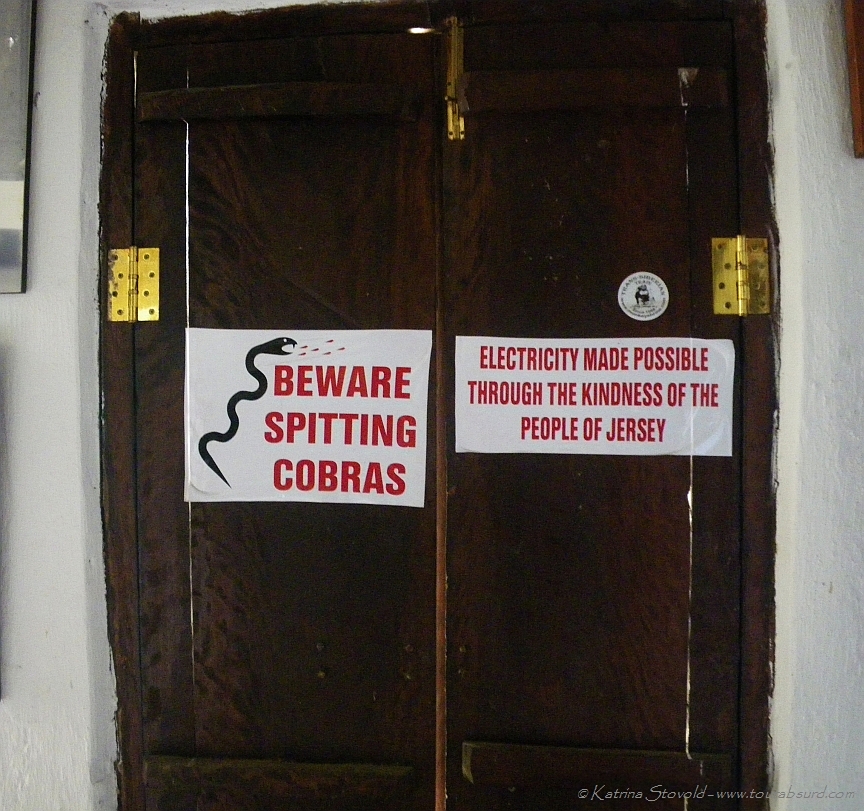
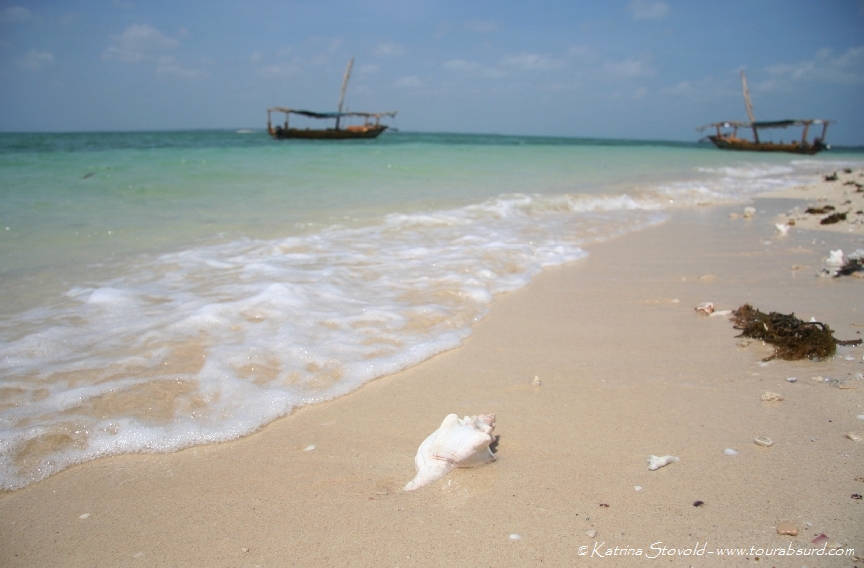
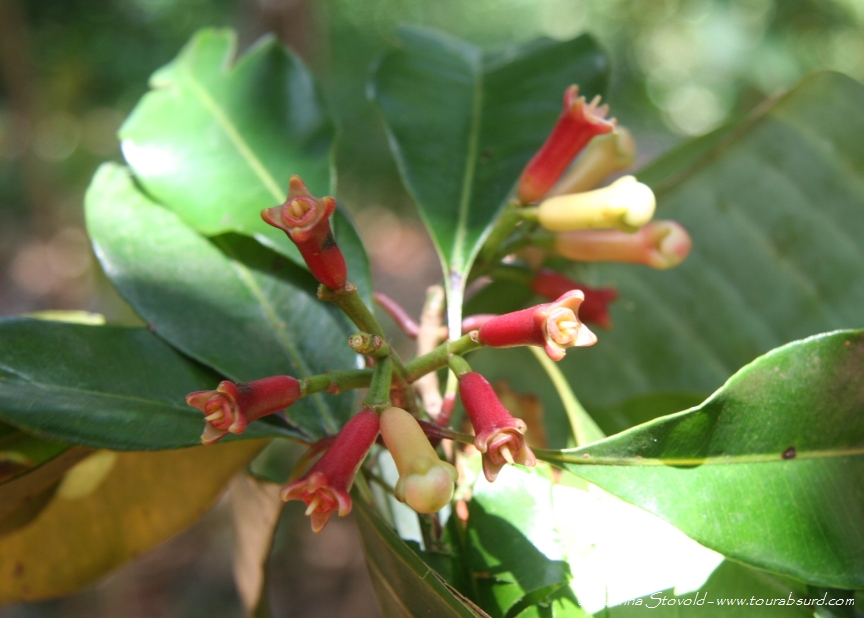
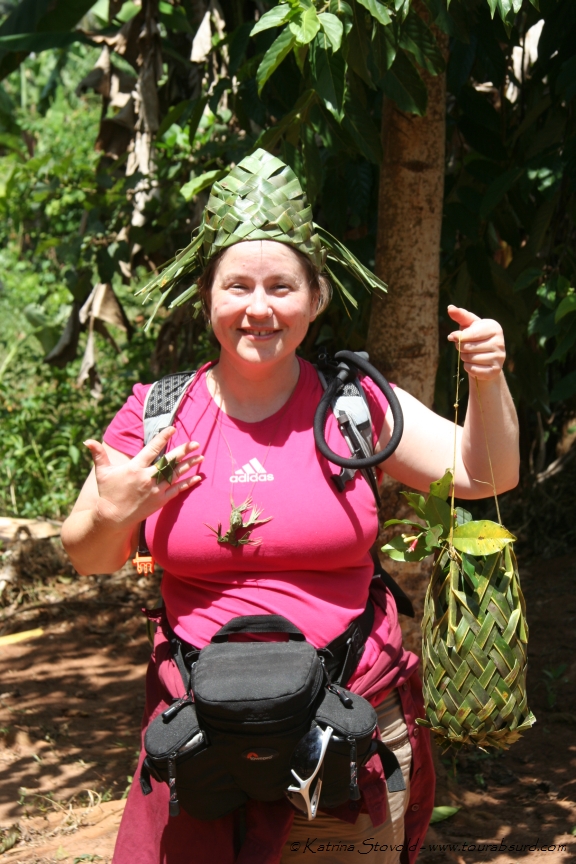
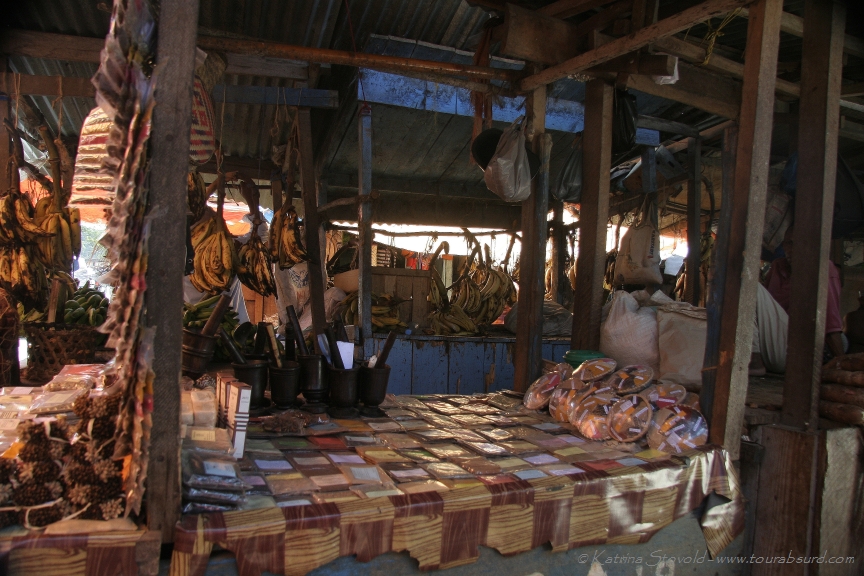
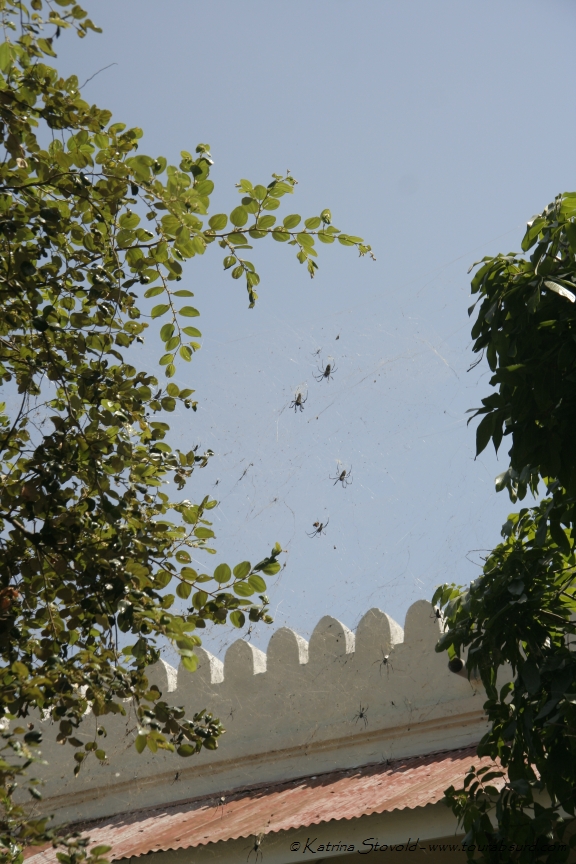
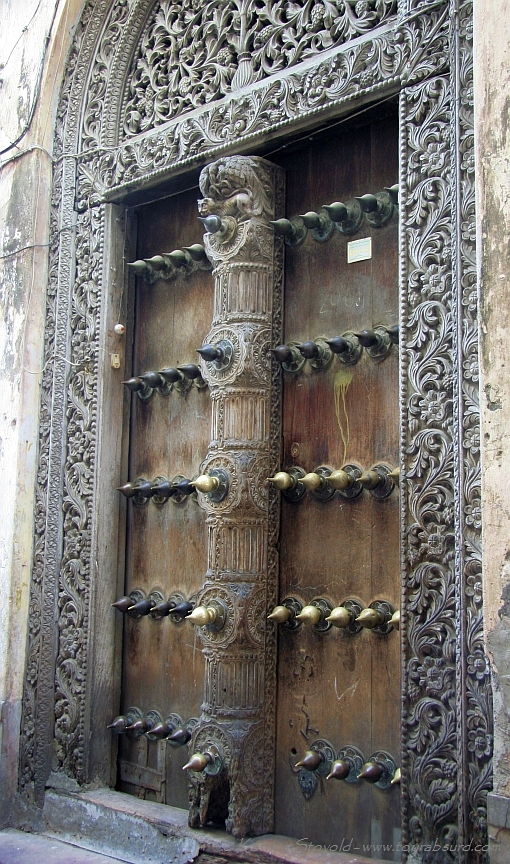
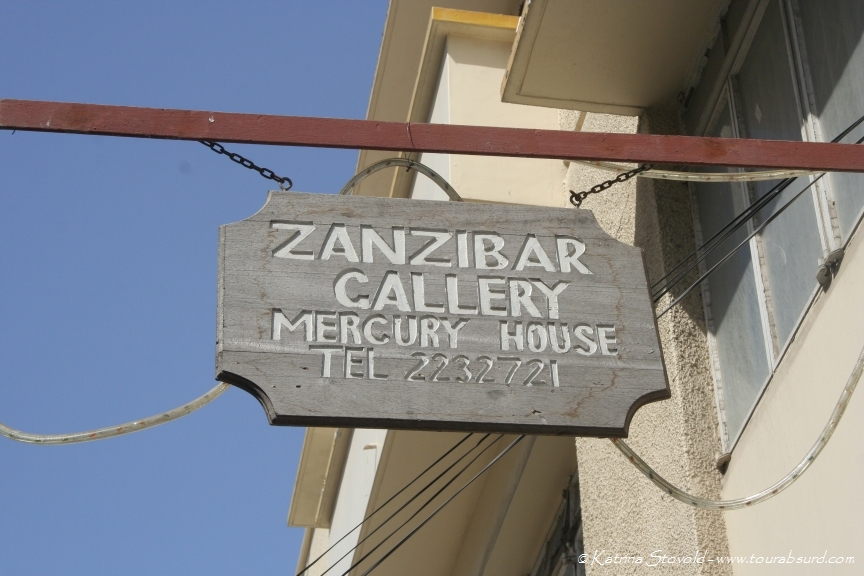
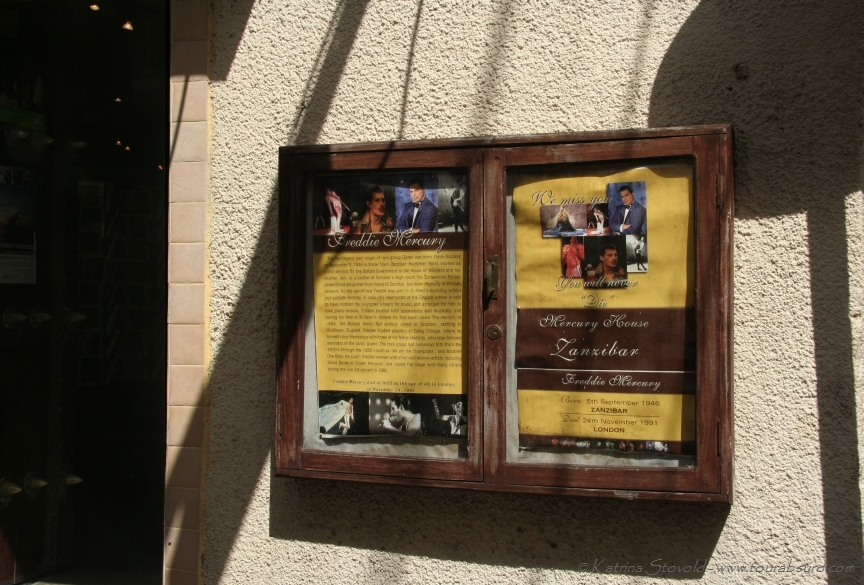
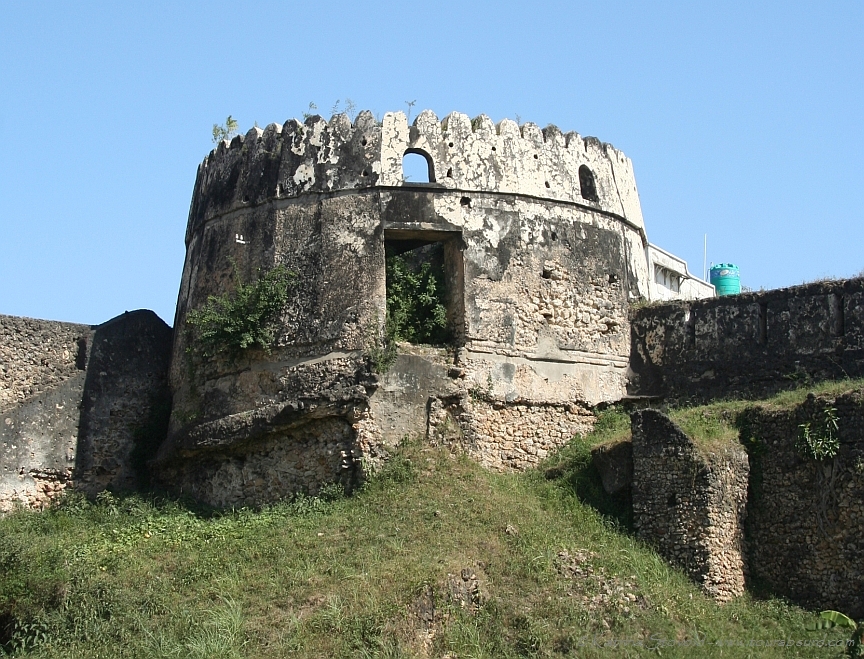

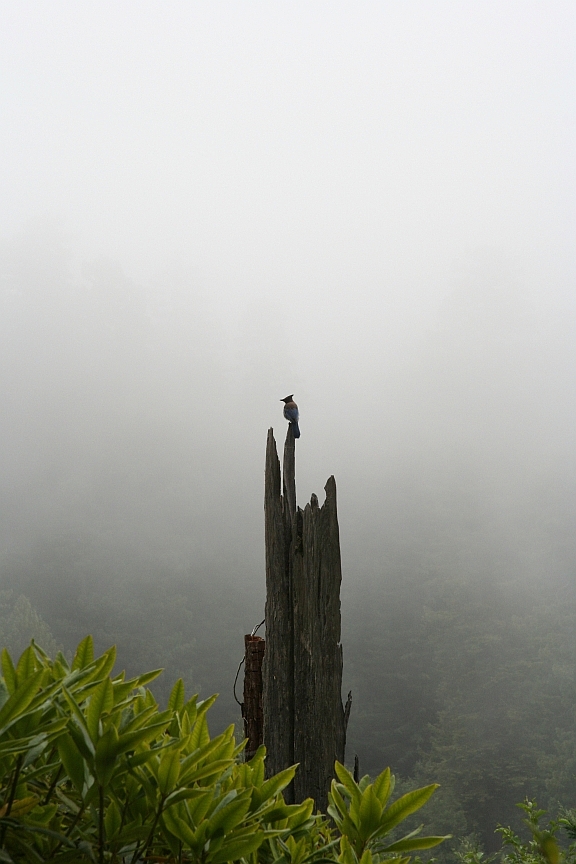
Your photos makes Zanzibar scary :) Spiders, doors with spikes, spitting cobras.
But I am sure the place is really amazing – just by looking at the beach it makes me wanting to go there.
My intention is never to scare, so I hope that’s not really what you took from this! I’m dreaming about the water right now… Oh, how I love to swim in a tropical ocean! :)
I had such a hard choice — go to Zanzibar, or stay in my village near Kilimanjaro and get to know it better. I chose to stay put and have a local weekend, but still dream of seeing Zanzibar! Did I make the wrong choice?
I would not say so. While we enjoyed our Zanzibar time, it was mostly spent engaging in fairly touristy pursuits. Like you, we generally prefer to meet real folks and make real friends. I wouldn’t trade my Zanzibar experience, but that doesn’t mean you should trade yours, either.
If you head back to Tanzania, go ahead and hop over to Unguja if you want to, but consider Pemba instead. Far less oriented toward tourism and a lot more real, accessible folks there. :)
Zanzibar is definitely in my top 5 of dream destinations I must see–I’m so jealous you’ve been there!
Girl, stop! You’ve been to some of the most amazing places on the planet and have the video to prove it. You’re one of my blogging idols. ;)
What a beautiful and interesting place to visit. Very exciting too — Spitting cobras, witchcraft, spiders etc…! My hubby is also a Freddie Mercury fan, so I’ll pass this information along to him, too. Loved your pics and story, Katrina.
Thanks, Cathy! I think there might be spitting cobras on the islands, but they are rare. Dario was more worried about it than I was and wouldn’t go from the dining area to our sleeping quarters without a big flashlight in the evening. I was pretty sure any snake that was out at night would hear me coming and want to get away rather than hawk a poisonous blast at me, but maybe that’s just because I like snakes. ;)
And now to put on some music because I’ve had the bicycle song stuck in my head for days!
Wow, so much great stuff in this post. I think my favorite is the climbing for a coconut while singing :) Those spiders are terrifying. If that’s how big they look from distance.. yikes. Too bad about the mercury house, but it seems like the rest of the day made up for it.
Thanks, Phil! I actually thought of you while I was uploading the video. It was seriously one of the most beautiful things I’ve ever heard.
Looking forward to hearing about your upcoming adventures! :)
Did you visit the North of Zanzibar Kristina? I loved Kendwa. The Jozani forest is a good spot for monkeys too – did you get there?
Alas, no, Liv. Our hotel was south of Stone Town and on the east coast. We actually hadn’t planned a trip to Unguja at all. It only happened because we were unable to go on the Kili trek. We used the extra days between Moshi and Pemba to go, but it was only 2 or 3 days. We’d like to go back! There was a place in the south to go see red colobus monkeys in a forest, but we never had time. Definitely need more time in Africa in general. So diverse and rich! :D